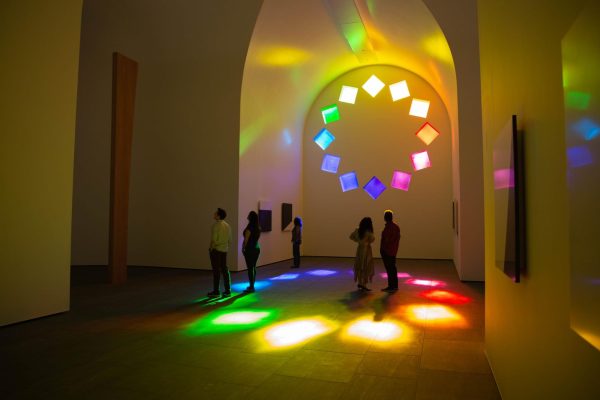Is Your Red the Same as My Red? Color Provides Arbitrary Attributes

Image by Amrin Madhani
Color, as we know it, doesn’t exist in the outside world such as gravity or atoms. Instead, color is created inside our minds.
Look out a window. You see a blue sky, green grass, reddish-brown brick walls and grayish black roads.
Those who have normal color vision would probably agree that the sky is indeed blue and the grass is green, but that doesn’t change the fact that color is an illusion.
Color, as we know it, doesn’t exist in the outside world such as gravity or atoms. Instead, color is created inside our minds because our brains convert certain ranges of an electromagnetic spectrum into color. There is no way a person could measure or observe color physically to determine that all people experience the same color.
So how is it known that when two people look at an apple they are seeing the same color? One person sees the apple as red and calls it red, while the other person sees the apple as green but has learned to address it as red. Just like that, a person can communicate effectively and walk away without knowing that the other person had a totally different perception on the same matter.
Scientists already know that not all people see color the same way, for example, the color blind. We can test people and diagnose them according to their success or failure at spotting color the way a normal person can. Or it could be that the way we use color can cause color to look differently in different people’s heads without affecting the tests.
If that were the case people would argue about some colors looking better with others and that there are some colors that might not even exist. But that already happens. The way we view color is all embedded within the ability of our brains; this fundamental development in our brains has left us no choice but to realize that in our heads, we are alone.
So what happens when you try to describe to a blind person what the color red looks like? You can’t give color a feature or quality simply because we have no words to explain it. A sighted person can say that red looks like hotness and blue looks like coldness, but a person who’s never seen color cannot understand it.
Instead of colors, the blind person may remember the heat and the ice, but never the color. It would be like trying to explain to a robot what it means to feel. You can teach them about every emotion, reaction, feeling and experience; they can pass the biggest exam about it, but they will never be able to understand it. They won’t associate words with feeling because they cannot feel.
Without words that can properly describe color you can’t know if your friend, parent, family or classmate sees the same color as you. You won’t know that the apple you have seen looks red to you, green to your mom, purple to your friend, and blue to your teacher, but the object that we relate it all to has been universally described as red.
Is your red the same as mine?
Your donation will support the student journalists of McNeil High School. Your contribution will allow us to purchase equipment and cover our annual website hosting costs.








